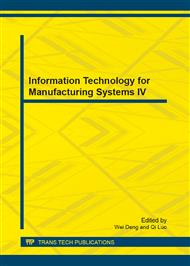p.81
p.88
p.93
p.99
p.104
p.110
p.116
p.122
p.127
Aeroacoustic Characteristics of Cavity and Effect Study of Mesh on Noise Suppression
Abstract:
To explore the noise suppression effect of mesh on cavity, the wind tunnel experiment is carried out based on the analysis of clean cavity flow characteristics. The meshes are arranged both in the cavity and at the leading edge of the cavity. Through the analysis of pressure distribution on the cavity bottom and the noise spectrum monitored at front and rear walls respectively, noise suppression effects of mesh programs relative to the clean cavity and changes in the flow field are studied, the results show that the mesh inside the cavity has a better noise reduction effect. The work in this paper provides an effective way for cavity noise reduction.
Info:
Periodical:
Pages:
104-109
Citation:
Online since:
September 2013
Authors:
Keywords:
Price:
Сopyright:
© 2013 Trans Tech Publications Ltd. All Rights Reserved
Share:
Citation:


